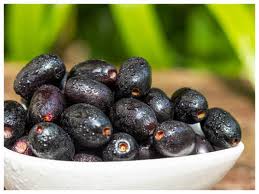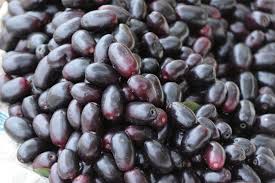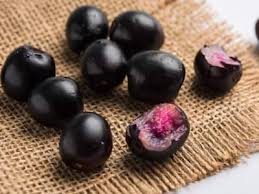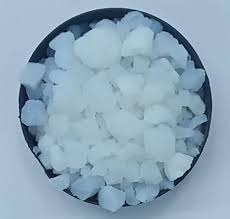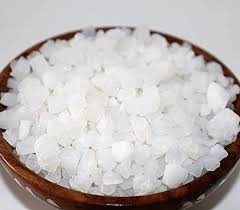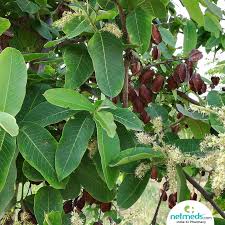
How Amla Benefits Skin When Taken Internally vs. Topically
In the world of natural and Ayurvedic skincare, Amla (Indian Gooseberry) holds a special place. Revered for centuries, Amla is packed with Vitamin C, antioxidants, minerals, and healing properties that make it a staple in both internal and external beauty routines. At Dirghaanshi, we strongly believe that true skin health comes from inside and outside — and Amla is the perfect example of that balance.
Whether consumed as juice, powder, or supplements, or applied topically as masks or oils, Amla offers profound benefits for radiant, clear, and youthful skin. But how does it actually work? And what’s the difference between taking Amla internally vs. applying it topically? In this guide, we explore both approaches in depth, blending Ayurvedic wisdom with practical skincare tips to help you make the most of this miraculous fruit.
Long Description: A Complete Guide to Internal vs. Topical Use of Amla for Skin
✅ 1. Amla in Ayurveda: A Rasayana for Skin Health
In Ayurveda, Amla is considered a Rasayana — a rejuvenating herb that works on all levels of the body and mind. It is Tridoshic, meaning it balances Vata, Pitta, and Kapha. Amla enhances Ojas, the essence of vitality and immunity, and nourishes Rasa Dhatu, the tissue responsible for skin and hydration.
Part 1: Internal Consumption of Amla for Skin Benefits
✅ 2. Rich in Vitamin C and Collagen Support
When consumed internally, Amla provides a bioavailable form of Vitamin C, which is crucial for collagen production. Collagen keeps your skin firm, elastic, and youthful.
Benefits:
Reduces fine lines and wrinkles
Boosts skin elasticity
Speeds up wound healing
✅ 3. Antioxidant Action for Skin Protection
Amla is loaded with powerful antioxidants like gallic acid, ellagic acid, and flavonoids. These neutralize free radicals that damage skin cells and accelerate aging.
Benefits:
Prevents pigmentation and dullness
Protects against UV damage and pollution
Slows down signs of aging
✅ 4. Blood Purification and Detoxification
According to Ayurveda, glowing skin starts with clean blood. Amla purifies Rakhta Dhatu (blood tissue) and supports liver function, which plays a key role in detoxification.
Benefits:
Clears acne, boils, and skin eruptions
Improves overall skin tone
Balances hormones that affect skin clarity
✅ 5. Gut Health and Skin Connection
In Ayurveda, Agni (digestive fire) is directly related to skin health. Amla enhances digestion and assimilation, preventing Ama (toxins) buildup that leads to skin problems.
Benefits:
Reduces breakouts linked to poor digestion
Supports nutrient absorption for glowing skin
Enhances elimination of toxins through proper bowel movement
✅ 6. How to Take Amla Internally for Skin Benefits
Form Dosage When to Take
Amla Juice 20–30 ml daily Empty stomach in the morning
Amla Powder 1 tsp with warm water/honey Morning or before bed
Amla Capsules 1–2 capsules (standard dose) As per label or Ayurvedic doctor
Chyawanprash 1–2 tsp daily With warm milk or water
Pro Tip: Combine Amla with Giloy or Neem for enhanced blood purification and skin detox.
Part 2: Topical Application of Amla for Skin Health
✅ 7. Amla’s Topical Action – Vitamin-Rich Skin Nourishment
Amla can be used on the skin in the form of face masks, scrubs, and oil infusions. It rejuvenates skin cells, tightens pores, and gives an even complexion.
Benefits:
Brightens dull skin
Reduces pigmentation and dark spots
Firms and tones the skin
✅ 8. Anti-inflammatory and Antibacterial Properties
When applied to the skin, Amla’s natural anti-inflammatory and antibacterial qualities help soothe irritated skin and fight acne-causing bacteria.
Benefits:
Heals pimples and scars
Reduces redness and inflammation
Prevents future breakouts
✅ 9. Hydration and Oil Regulation
Amla has astringent and hydrating properties. It controls excess oil while maintaining the skin’s natural moisture barrier.
Benefits:
Controls acne in oily skin
Hydrates dry skin without heaviness
Refines skin texture
✅ 10. How to Use Amla Topically for Skin
A. Amla Face Mask for Glowing Skin
Ingredients:
1 tsp Amla powder
1 tsp honey
Rosewater to form a paste
Instructions:
Apply on clean face, leave for 10–15 mins, rinse with lukewarm water.
B. Amla + Multani Mitti for Oily Skin
Ingredients:
1 tsp Amla powder
1 tsp Multani Mitti
Lemon juice (few drops)
Instructions:
Apply to oily areas. Helps remove blackheads and reduce sebum.
C. Amla Oil Infusion for Skin Massage
Infuse Amla powder in sesame oil or coconut oil for 1 week. Use this oil as a pre-bath massage to nourish and firm skin.
Pro Tip: Add turmeric or sandalwood for enhanced Ayurvedic effect.
Internal vs. Topical Use: Which One Is Better?
Aspect Internal Use Topical Use
Primary Action Works from inside, nourishes dhatus Acts locally on skin surface
Time to See Results 2–4 weeks (consistent use) Immediate brightness, long-term with use
Best For Acne, aging, pigmentation Oily skin, dullness, uneven tone
Ayurvedic View Builds Ojas, purifies blood Balances doshas on the skin level
Suggested Together? Yes – for holistic skincare Yes – combine for full-spectrum care
Conclusion: Use both methods together for best results. Think of internal Amla as the foundation and topical use as surface enhancement.
✅ 11. Who Should Use Amla for Skin and Who Should Be Cautious
Ideal For:
Teens and adults with acne-prone skin
People with signs of premature aging
Those suffering from pigmentation or dullness
Individuals with Pitta or Rakhta imbalance
Use with Caution:
Sensitive skin may react to raw Amla paste
Always patch test before full-face application
Avoid in open wounds or cuts
✅ 12. Common Skin Problems Amla Can Help With
Skin Problem Amla Action
Acne and Pimples Anti-bacterial and anti-inflammatory
Hyperpigmentation Vitamin C and skin-lightening
Premature Aging Boosts collagen, antioxidant repair
Dullness and Dryness Hydrates and rejuvenates skin
Uneven Skin Tone Brightens and firms skin
✅ 13. Scientific Evidence Supporting Amla for Skin
Modern research shows that Amla:
Contains 20 times more Vitamin C than oranges
Increases pro-collagen synthesis in skin
Reduces oxidative stress and slows cellular aging
Helps regulate melanin production for even skin tone
Conclusion: Amla’s skin benefits are well-supported by both traditional texts and scientific studies.
✅ 14. Final Thoughts from Dirghaanshi
At Dirghaanshi, we promote natural healing through the power of Jadi Buti and ancient Ayurvedic formulations. Amla is one such sacred fruit that offers complete skin transformation — from within and without.
Whether you’re struggling with breakouts, aging signs, or just want a natural glow, incorporating Amla into your diet and skincare can deliver holistic, long-lasting results. Begin with small, regular doses and watch your skin thank you in return.



